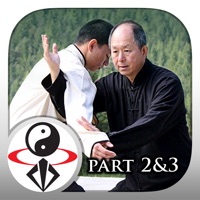
Publicado por Publicado por YMAA Publication Center, Inc.
1. The history of the basic postures in the Yang form can be traced back through Wudang mountain to Shaolin Temple, developed from a series of movements originating from "Chang Quan" (Long Fist, a reference to the winding Long River, another name for the Yangtze).
2. Bodhidharma's teaching at the Buddhist Shaolin Temple around 550AD, which detailed the theory of using the mind to lead the Qi to energize the physical body, is widely considered the origin of all Internal Martial Arts, including Tai Chi.
3. Originally, Tai Chi Chuan was an ancient internal Chinese martial art, 'Grand Ultimate Fist'; a highly effective form of combat specializing in short and middle-range fighting.
4. In China, t'ai chi ch'uan is categorized under the Wudang grouping of Chinese martial arts, which are applied with internal power (jing), using Qi (energy).
5. From the relaxed moving exercise, you can bring your physical body into an ultimate level of relaxation and natural ease, resulting in smooth Qi (inner energy) and blood circulation.
6. The principles of softness, sticking, adhering, and using the opponent's own momentum against himself were established in these precursory martial styles.
7. Yang's tai chi can be traced back to the Yang family through Grandmaster Kao, Tao (高濤) and his teacher Yue, Huanzhi (樂奐之), an indoor disciple of Yang, Chengfu (楊澄甫).
8. Other forms of the same era such as "Heavenly-Inborn Style", "Nine Small Heavens", and "Acquired Kung Fu" also show similarities to what later became Taijiquan.
9. Today, most people practice Tai Chi slowly to develop their balance, strength, and vitality, and the martial applications of the art are often ignored.
10. First you will learn the Eight Moving Patterns, or Postures, known as Peng, Lu, Ji, An, Cai, Lie, Zhou, and Kao.
11. Through practicing Tai Chi you are able to calm down the mind, locate your spiritual center, and consequently find your entire being.
Verifique aplicativos ou alternativas para PC compatíveis
| App | Baixar | Classificação | Desenvolvedor |
|---|---|---|---|
 Tai Chi 13 Postures Tai Chi 13 Postures
|
Obter aplicativo ou alternativas ↲ | 3 5.00
|
YMAA Publication Center, Inc. |
Ou siga o guia abaixo para usar no PC :
Escolha a versão do seu PC:
Requisitos de instalação de software:
Disponível para download direto. Baixe abaixo:
Agora, abra o aplicativo Emulator que você instalou e procure por sua barra de pesquisa. Depois de encontrá-lo, digite Tai Chi 13 Postures na barra de pesquisa e pressione Pesquisar. Clique em Tai Chi 13 Posturesícone da aplicação. Uma janela de Tai Chi 13 Postures na Play Store ou a loja de aplicativos será aberta e exibirá a Loja em seu aplicativo de emulador. Agora, pressione o botão Instalar e, como em um dispositivo iPhone ou Android, seu aplicativo começará a ser baixado. Agora estamos todos prontos.
Você verá um ícone chamado "Todos os aplicativos".
Clique nele e ele te levará para uma página contendo todos os seus aplicativos instalados.
Você deveria ver o ícone. Clique nele e comece a usar o aplicativo.
Obtenha um APK compatível para PC
| Baixar | Desenvolvedor | Classificação | Versão atual |
|---|---|---|---|
| Baixar APK para PC » | YMAA Publication Center, Inc. | 5.00 | 1.0.3 |
Baixar Tai Chi 13 Postures para Mac OS (Apple)
| Baixar | Desenvolvedor | Comentários | Classificação |
|---|---|---|---|
| $5.99 para Mac OS | YMAA Publication Center, Inc. | 3 | 5.00 |

Tai Chi Ball Qigong

Yang Tai Chi for Beginners 1

Yang Tai Chi for Beginners 2&3

Eight Brocades Qigong Standing

Eight Brocades Qigong Sitting
ShutEye: Rastreador de sono
O meu Calendário Menstrual Flo
Carteira de Vacinação Digital
IMC Calculadora Controle Peso
Calm - Meditação e Sono
I am – Afirmações diárias
Motivation - Frases diárias
Calendário Menstrual, Ovulação
Drogasil
Droga Raia
Meditopia: Meditação, Dormir
Gympass
Unimed Cliente
Mi Fit
Smart Fit App